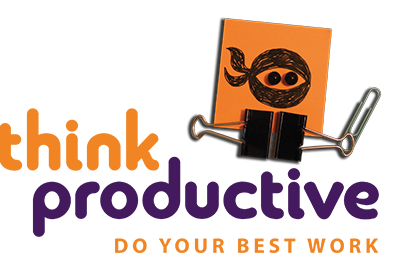It’s New Year Resolution time, so in this post Graham Allcott, author of “How to Be a Productivity Ninja“, runs through some of the other books out there, that deal with long-term-planning
We’d love to hear about the books YOU find useful in your productivity life (join the discussion on Facebook!)
And don’t forget to pick up our New Year Resolution Kit
INTRODUCTION
Many time management courses, self-help books and business texts get into elaborate detail about all the various stages beyond projects, such as: ten year goals, targets and overall vision.
The implication is that you need to have a plan at each of these ‘levels’ so that you’re fully in control of your destiny.
Like many time management philosophies, this would have worked well in the fifties and sixties, in the days of full employment and a job for life.
These days, people might think nothing of having several careers, let alone several employers, so their life’s mission or vision may change substantially at different stages of their lives. It makes having a ten-year plan pretty difficult – or at least slightly academic – and personally I find anything beyond a one-year plan pretty difficult to predict.
That said, doing this kind of thinking can be very helpful in guiding a general direction and revealing what’s really important to you: your values.
In How to Be a Productivity Ninja I deliberately avoid giving you lots of detailed ‘life planning’ information here and focus only on the basics. If you wanted to delve into this topic in more detail, I would recommend:
MICHAEL HYATT
Michael Hyatt’s excellent eBook Lifeplan, which you can download for free here
STEVEN COVEY
Try reading some of Steven Covey’s superb questions in his book The Seven Habits of Highly Effective People. Pick it up on Amazon here
In terms of companies, a simplified top down approach works well.

VERNE HARNISH
Verne Harnish, in Mastering the Rockerfeller Habits, calls this “1% vision and 99% alignment”.
His message is that yes, your company should have a clear and compelling vision about how to grow and develop, but the worst thing you can do is get caught up in semantics and wordings when what your company needs more than the perfect, flashy vision statement is a lot more actions which align towards this often imperfect but fit-for-purpose vision. He suggests focussing only on a few key performance numbers within your business.
PETER DRUCKER
Use the Peter Drucker “what gets measured gets managed” mantra, but don’t try to manage too much when there’s also the real work to do. However, individuals are more agile than companies – and arguably their needs and decision-making even more complex than organisations’ are, and often the top-down approach to creating your life plans doesn’t work.
DAVID ALLEN
I agree with the sentiment expressed by David Allen in much of his work but most explicitly in Getting Things Done that the best way for individuals to plan is to take a bottom up approach instead: clear the decks and deal with your current workload and you’ll have more clarity and thinking time to focus on creating the greatest vision for yourself.
It’s a more realistic approach to achieving clarity at both the actions level and a much higher, purpose- and vision-based one. This seemed to go against the mainstream when Getting Things Done was first released, but is now a more accepted view as the world has changed and our brains are even more crowded and distracted with an overpowering influx of information.
The truth is that of course you need a good handle on both detail and bigger picture.
And now … ?
Subscribe to our blog via RSS here
Join the discussion on Facebook



